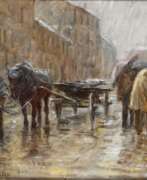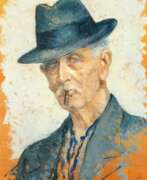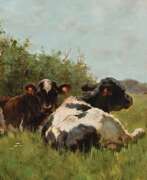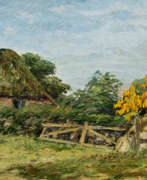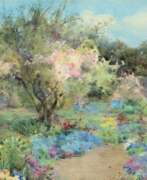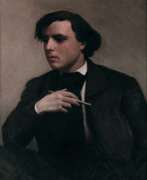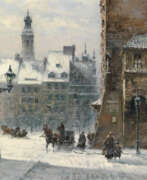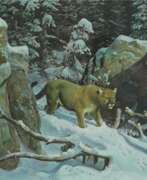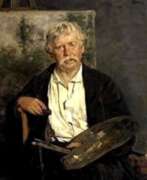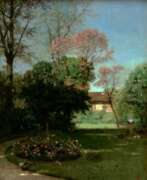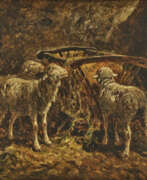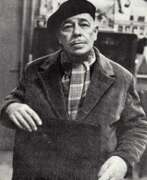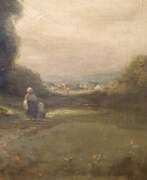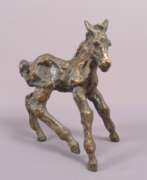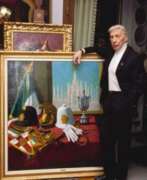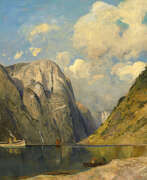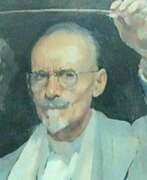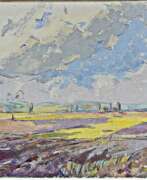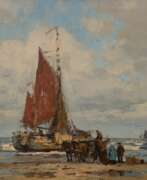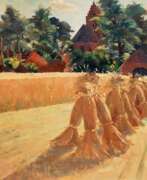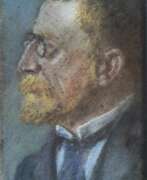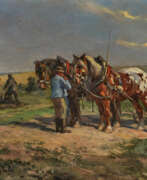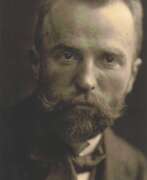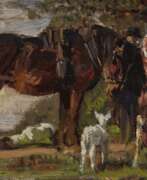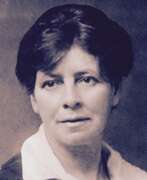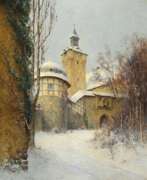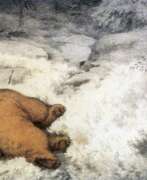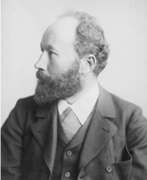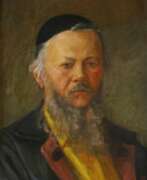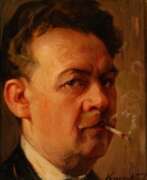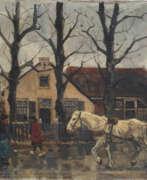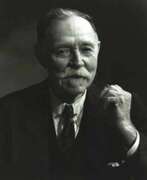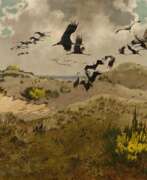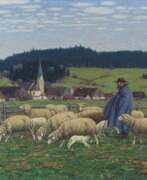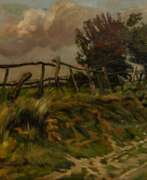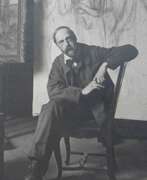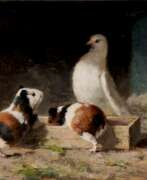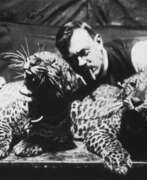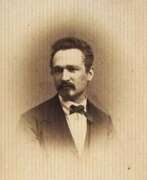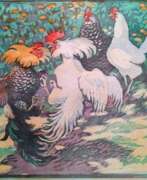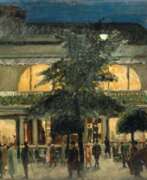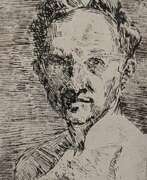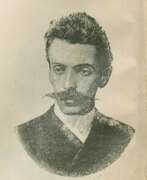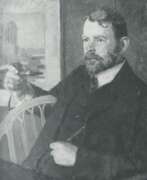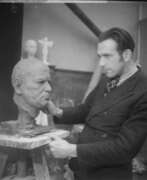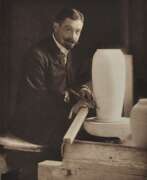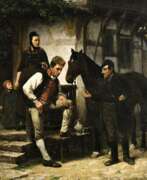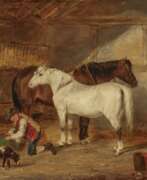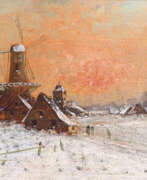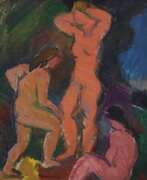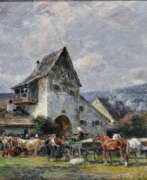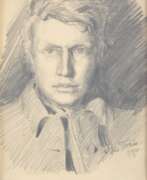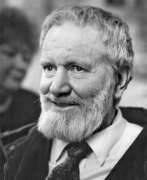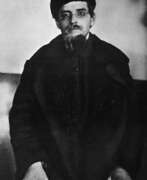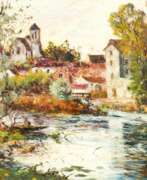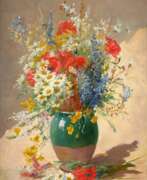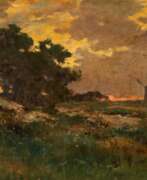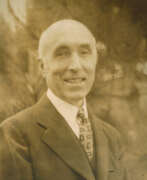Animalistic Impressionism
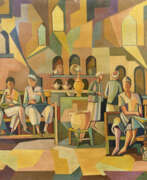

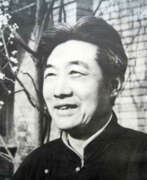

Xu Beihong (Chinese: 徐悲鴻; Wade–Giles: Hsü Pei-hung; 19 July 1895 – 26 September 1953), also known as Ju Péon, was a Chinese painter.
He was primarily known for his Chinese ink paintings of horses and birds and was one of the first Chinese artists to articulate the need for artistic expressions that reflected a modern China at the beginning of the 20th century. He was also regarded as one of the first to create monumental oil paintings with epic Chinese themes – a show of his high proficiency in an essential Western art technique. He was one of the four pioneers of Chinese modern art who earned the title of "The Four Great Academy Presidents".


Félix Bracquemond was a French painter, etcher, and printmaker. He played a key role in the revival of printmaking, encouraging artists such as Édouard Manet, Edgar Degas and Camille Pissarro to use this technique.
Unusually for a prominent artist of this period, he also designed pottery for a number of French factories, in an innovative style that marks the beginning of Japonisme in France.


Arthur Brusenbauch was an Austrian painter. Arthur Brusenbauch learned from Johann Kautsky and then worked as a stage decorator himself. He studied in Vienna at the Staatsgewerbeschule and the Academy of Fine Arts, interrupted by military service and imprisonment. In 1920 he became a member of the Vienna Secession, and in 1939 he moved to the Künstlerhaus. In 1928 he had represented Austria in the art competitions of the 1928 Olympic Games. From 1937 to 1941 he participated in all major German art exhibitions in Munich with seven oil paintings. There, in 1939, Hitler acquired the picture of Melk an der Donau in festive decorations. Brusenbauch, who is attributed to late impressionism, dealt with fresco painting and graphics.
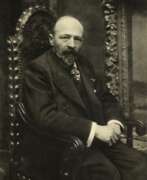

Franciscus Eduardus Maria (Franz) Courtens (1854–1943) was a Belgian painter. He was a leading figure in the Dendermonde School, famous for his paintings of nature and landscapes. Courtens was professor at the Royal Academy of Fine Arts (NHISKA) in Antwerp from 1904 till 1924. He was a personal friend of Leopold II, who gave him the privilege of free access to the royal Parc of Laeken. Some of his paintings stil remain in the Royal collection.
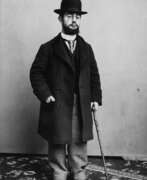

Henri de Toulouse-Lautrec was a distinguished French Post-Impressionist artist, renowned for his deep insights into Parisian nightlife and the world of entertainment in the 1890s. Born into an aristocratic family in Albi, France, Toulouse-Lautrec faced significant health challenges. He suffered from a rare condition, possibly pycnodysostosis, which stunted the growth of his legs following two fractures during his adolescence, leading to a notably short stature as an adult.
Despite his physical limitations, Toulouse-Lautrec immersed himself in art, becoming a key figure in the Post-Impressionist movement alongside artists like Paul Cézanne and Vincent van Gogh. He is particularly celebrated for his vibrant and expressive depictions of the bohemian lifestyle in late 19th-century Paris, often featuring scenes from brothels and nightlife venues. His unique style combined elements of Art Nouveau and lithography, as evidenced in famous works such as "Moulin Rouge: La Goulue" and "At the Moulin Rouge: The Dance".
Toulouse-Lautrec's work offers a window into the Parisian entertainment scene of his time, marked by a vivid use of color and a candid portrayal of his subjects. His ability to capture the essence of Parisian society, from dancers to prostitutes, in an era of great artistic and cultural dynamism, makes his work particularly valuable to art collectors and experts.
For those interested in the art and life of Henri de Toulouse-Lautrec, staying informed about sales and auction events is essential. Sign up for updates to receive the latest news on pieces by Toulouse-Lautrec available for purchase or auction. This subscription focuses exclusively on new product sales and auction events related to Toulouse-Lautrec, ensuring that enthusiasts and collectors don't miss out on any opportunity to acquire pieces from this iconic artist.
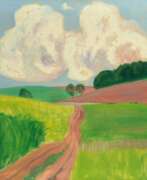

Kaj Ejstrup was a Danish artist, illustrator and sculptor. Above all, he is remembered for the landscapes he painted in the north west of Zealand as a member of the artists' colony known as the Odsherred Painters. In 1932, he was one of the founding members of the Corner artists association. Much of his work can be seen at Odsherreds Museum of Art.


Lee Man Fong (Chinese: 李曼峯; pinyin: Lǐmǐnfēng) was a Chinese-born Indonesian artist known for his striking large-format genre portraits and animalistic scenes. His work is represented in a large number of prestigious art museums and collections around the world.
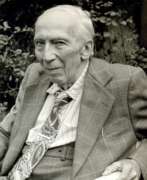

Franz Frank was a German painter.
He studied painting at the Stuttgart Academy of Fine Arts. Frank created many still lifes and landscapes, as well as sketches of everyday life and animals. He exhibited at the Academy in Stuttgart and the Dresden Art Association, and from 1928 he participated regularly in the exhibitions of the association Die Juryfreien in Berlin. Franz Frank took part in an exhibition of the Berlin Secession in 1932, but then the outbreak of the Second World War changed his whole life and he almost never returned to painting again.


Franz Xafer Gräßel was a German animal and landscape painter.
Gräßel studied painting at the Karlsruhe Academy and at the Munich Academy, where he became a professor in 1911. Initially his favorite subject was rural landscapes, but from 1894 he painted mainly ducks and geese and achieved a high level of skill in their depiction. Gräßel even earned the nickname "duck painter".
In 1932 Gräßel joined the NSDAP, and in 1938, 1939 and 1940 was represented by four paintings at the Great Exhibition of German Art in Munich. Adolf Hitler liked them so much that he purchased them all. The artist's paintings are now in important galleries and collections in Germany.
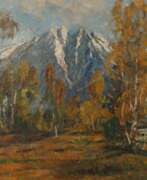

Karl Georg Hänel was a German landscape and animal painter and commercial artist.
Hänel undertook study trips to Mecklenburg, Bavaria, Switzerland and the Salzburg Alps. He mainly worked as a landscape and animal painter. As a commercial artist he created advertising posters, calendar pages and advertisements.


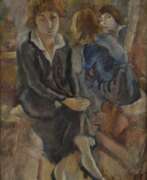

Moritz Heymann was a German painter, graphic artist and art teacher. Heymann initially worked primarily as a graphic artist and exhibited pencil drawings and lithographs. He created portrait and animal studies, especially of horses. Later he mainly showed paintings in exhibitions. From 1914 he often chose circus scenes as a motif for his works. He was a representative of Munich Impressionism.


Alexander Max Koester was a German painter. He depicted coastal landscapes and still lifes with flowers. After the artist first presented one of his landscapes with a family of ducks in Berlin in 1899, he earned the nickname "Duck Koester." The "duck" paintings were extremely popular with art lovers.
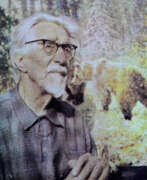

Alexey Nikanorovich Komarov (Russian: Алексей Никанорович Комаров) was a Russian and Soviet artist of the twentieth century. He is known as a painter, sculptor and animalist.
Alexey Komarov became famous for his illustrations in children's books and graphic works. His works cover a variety of subjects, from landscapes to animals. He has also created posters on a variety of subjects, including children's health care and the defense of the homeland during World War II. Komarov is also known for his watercolors as well as his sculptural works, including animal figures and busts. His works decorate various museums and exhibition pavilions.
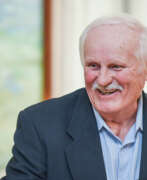

Robert Efimovich Landarsky (Russian: Роберт Ефимович Ландарский) is a contemporary Belarusian artist. He is known as a painter working in easel painting in the genre of landscape and figurative painting.
Robert Landarsky is the author of many works with views of picturesque corners of Belarus, as well as paintings on the theme of rural life, which the artist, who grew up in the countryside, knows well. The master of many works devoted to the heroism of people during the war, his brush also belongs to a triptych dedicated to the tragedy of Chernobyl. In the paintings of the artist dominate bright colors, noticeable influence on his work of the Impressionists.
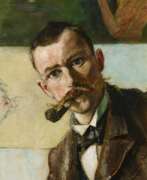

Carl August Liner was a Swiss painter, graphic artist, designer and inventor. He is sometimes referred to as Senior to distinguish him from his son, Carl Walter Liner, who was also a well known painter.
In addition to his paintings, he designed postage stamps and posters and did illustrations. It was this work that provided most of his income. He was also an amateur inventor and holds the patent for an early version of the single-axis mower.


Willy Lorenz was a German impressionist painter who specialised in the animalistic genre.
His detailed oil paintings beautifully reproduce the dynamics of wild boars, foxes, bison and moose in their natural habitat. Willy Lorenz skilfully conveyed the textures of snow, grass and fur. He used a very wide palette of colours in his works, as well as harmonious browns and golds.
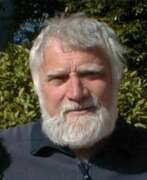

Arthur Karl Maderson is an Irish impressionist painter.
Arthur Maderson studied at Camberwell School of Art (London) and regularly exhibits at the Royal Academy and the Royal Hibernian Academy. In painting, Maderson uses the same principles as Claude Monet and other French Impressionists. He paints beach scenes, landscapes and figurative compositions.
The artist has also written numerous articles for magazines, as well as for the Encyclopedia of Oil Painting Techniques and other art history publications.


Arvid Mather was a German impressionist and modernist painter, illustrator, and graphic artist.
He studied painting at the Düsseldorf Academy and belonged to Heinrich Nauen's circle. Mather participated in the exhibitions of Junges Rheinland as well as in the Rheinische Secession.


Hans Meid was a German painter, graphic artist and illustrator.
Meid attended an art and craft school in Karlsruhe, and then at the art academy he became a pupil of impressionist Wilhelm Trübner (1851-1917) and realist Walter Kontz (1872-1947). In 1907 the Meissen porcelain manufactory engaged him as a designer; in 1908 he settled in Berlin as a freelance artist. His success was recognized with the Villa Romana Prize (1910) and membership in the Berlin Secession (1911). In 1919 Meid became a lecturer in printmaking at the University of Fine Arts in Berlin. In 1927 he was elected a full member of the Prussian Academy of Fine Arts, where he also headed the graphic arts workshop.
In the first decades of the twentieth century Hans Meid, together with his close friend Max Slevogt, was one of the leaders of Impressionism. He created an extensive collection of etchings, lithographs and engravings, a large number of illustrations for works of world literature, including Cervantes' Don Quixote, Goethe's Selective Affinity and many others. He designed book covers for 44 publishers (notably Schünemann and S. Fischer). He later added ink drawing, watercolor and oil painting. In 1948 Hans Meid became a lecturer at the State Academy of Fine Arts in Stuttgart, he was also a member of the German Artists' Association.
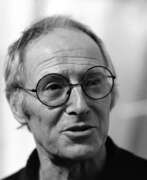

Lei Molin or Leopold Hubertus Molin was a Dutch painter, draftsman, engraver, and sculptor.
He was educated at the School of Applied Arts in Maastricht and at the Académie Julian in Paris. In the early period Molin worked in the style of Impressionism. Later, while living in North Holland, he joined the so-called Amsterdam Limburgers.


Alfred James Munnings was known as one of England's finest painters of horses, and as an outspoken critic of Modernism. Engaged by Lord Beaverbrook's Canadian War Memorials Fund, he earned several prestigious commissions after the Great War that made him wealthy. Between 1912 and 1914 he was a member of the Newlyn School of artists. His work was part of the art competitions at the 1928 Summer Olympics, the 1932 Summer Olympics, and the 1948 Summer Olympics.
Munnings was president of the Royal Academy of Arts from 1944 until his death.
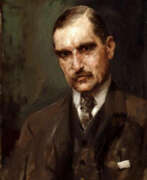

Hans Olde was a German painter of the late nineteenth and early twentieth centuries. He is known as an impressionist painter and graphic artist, as well as a teacher and administrator.
Olde produced images of people, animals, landscapes, portraits and genre paintings, experimenting with pointillism. He was one of the founders of the Munich Secession and directed the Saxon Higher School of Art in Weimar. In 1911 the master became head of the Academy of Art in Kassel, playing an important role in the development of both the Weimar and Kassel academies, introducing reforms in the teaching process and supporting the admission of women artists. Olde had a significant influence on the development of the art of his time.
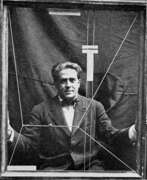

Francis Picabia, born Francis-Marie Martinez de Picabia, was a French avant-garde painter, poet, and typographist, whose work is celebrated for its diversity and innovation. His journey through various art movements, including Impressionism, Cubism, Dadaism, and Surrealism, showcases his refusal to be confined by any one style. Picabia's art is known for its eclectic nature, often blending mechanical elements with organic forms, thereby challenging traditional perceptions of art and beauty.
Picabia's significant contribution to the art world lies not just in his varied artistic output but also in his philosophical approach to creation. He believed in the freedom of expression, often using his art to critique societal norms and the art establishment itself. This rebellious spirit made him a pivotal figure in the Dada movement, where his works were celebrated for their irony and disdain for conventional art values.
Among his notable works, "Amorous Parade" and "I See Again in Memory My Dear Udnie" stand out, housed in prestigious institutions like the Museum of Modern Art in New York. These pieces exemplify Picabia's mastery over blending different elements of art movements, creating works that remain influential to this day. His legacy is not just in the pieces he created but also in his attitude towards art, encouraging future generations to challenge and redefine the boundaries of creativity.
For collectors and experts in art and antiques, Picabia's works represent not only significant artistic achievements but also valuable insights into the evolution of modern art. To stay informed about new product sales and auction events related to Francis Picabia, sign up for updates. This subscription is an essential resource for enthusiasts looking to enrich their collections with pieces from one of the most innovative artists of the 20th century.
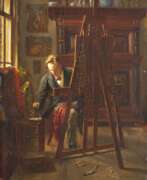

George Jan Hendrik (Geo) Poggenbeek was a 19th-century painter from Amsterdam, the Netherlands who maintained close contact with the Hague School.
In Amsterdam Poggenbeek painted various cityscapes in a style strongly reminiscent of George Breitner. Some of these works are now among the best of his works.
Poggenbeek was also known as a good etcher.


Franz Quaglio was a German painter of the last third of the nineteenth and early twentieth centuries of Italian origin. He is known as a painter, genre painter and animalist, a member of the Quaglio dynasty of artists, son of Simon Quaglio, a famous painter and decorator.
Franz Quaglio exhibited his works at various exhibitions from the early 1860s and is recognized as a master of miniature genre scenes with romantic, oriental and military motifs. He also dabbled in the creation of landscapes. Quaglio was a prolific artist and traveled extensively, visiting Italy, Turkey, Greece, and the Caucasus.
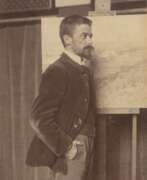

Theodore Robinson was an American painter best known for his Impressionist landscapes. He was one of the first American artists to take up Impressionism in the late 1880s, visiting Giverny and developing a close friendship with Claude Monet. Several of his works are considered masterpieces of American Impressionism.
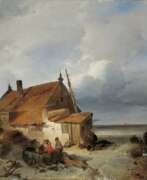

Charles Rochussen was a 19th-century painter from the Netherlands, who was also known as an illustrator and printmaker. While still a child, Charles showed a talent for drawing; between 1831 and 1834 he produced watercolor studies of birds. In 1837 he enrolled at the academy in The Hague, where he was taught by Wijnand Nuijen andAnthonie Waldorp. During his Hague period, which lasted until 1843 (or, according to some sources, 1846), he painted landscapes and beach and village views. Then he started painting looser, more along the lines of the upcoming Impressionism movement.


Rudolf Schramm-Zittau, actually Rudolph Max Schramm, also Rudolf Schramm, was a late Impressionist German painter of city and animal pictures. He gave himself the suffix "-Zittau" to show his attachment to the city of his birth.
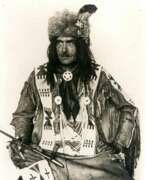

Julius Seyler is a German artist and athlete, the first double European speed skating champion.
He received his art education at the Munich Academy. For several years Julius Seyler lived in the USA and created many paintings depicting the life and history of the Montana Indians, which made him famous.
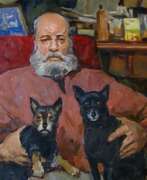

Igor Konstantinovich Skorobogatov (Russian: Игорь Константинович Скоробогатов) was a Soviet and Russian artist of the second half of the twentieth century. He is known as an animal painter.
Igor Skorobogatov graduated from the Repin Leningrad Institute of Painting, Sculpture and Architecture and specialized in animal imagery. His artistic heritage also includes genre and battle compositions, portraits and landscapes. The master's works are in famous museums, including the State Russian Museum, and in private collections around the world, including in Russia, Great Britain, France, Japan and other countries.
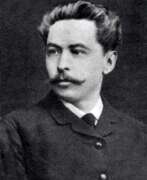

Alexei Stepanovich Stepanov (Russian: Алексей Степанович Степанов) was a distinguished Russian genre painter, illustrator, and art teacher born on May 6, 1858, in Simferopol and passed away on October 5, 1923, in Moscow. Stepanov's early life was marked by tragedy; he lost both parents by the age of five and was subsequently raised in a Moscow orphanage for children of military families. His formal education at the Konstantin Surveying Institute was followed by auditing classes at the Moscow School of Painting, Sculpture and Architecture, where he was influenced by prominent artists of the time.
Stepanov's art career flourished when he began exhibiting with the Peredvizhniki, a group of realist artists, and later helped found the Union of Russian Artists. His works often depict serene rural scenes and everyday peasant life, resonating with a mood of profound emotional depth. Notable works include "Moose Herd," acquired by Pavel Tretyakov, and "Morning Greetings," which earned him the title of Academician from the Imperial Academy of Arts. His work "The Swing" was notably acquired by the Carnegie Museums of Pittsburgh later in his career.
For those interested in the Russian art movement and genre painting, Stepanov's contributions are invaluable. His works can be viewed in major collections such as the State Tretyakov Gallery. To stay updated on exhibitions and sales related to Alexei Stepanov, consider subscribing to updates for collectors and art enthusiasts.
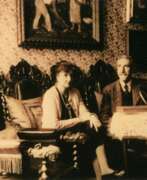

Max Stern was a German painter and graphic artist of Jewish ancestry, associated with the Düsseldorfer Malerschule. He was originally an Impressionist, but later became an advocate of the New Objectivity.
His career progressed uneventfully until the Nazi takeover in 1933. At that point, he was placed under a professional ban, and expelled from Malkasten. With the establishment of the Reichskulturkammer, it became difficult to obtain painting supplies. Despite this, he and his fellow Jewish artists in the Judische Kulturbund were able to exhibit among themselves until 1936. Shortly after that, in 1937, Joseph Goebbels ordered the confiscation of all "degenerate art", which included Stern's works.
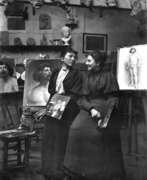

Adelheid Fanny Martha Stettler was a Swiss painter and engraver. She was one of the founders of the Académie de la Grande Chaumière, and was co-principal of the school from 1909 until 1945.
Stettler's subjects included many outdoor scenes of children playing in the Jardin du Luxembourg and the Tuileries Garden, as well as interiors, still lifes, landscapes, portraits and animal studies. Stettler's works are held by the Kunstmuseum Winterthur, the Museum of Fine Arts Bern, the Musée d'Art et d'Histoire in Geneva, the Musée du Luxembourg in Paris, and the Galleria Nazionale d'Arte Moderna in Rome.
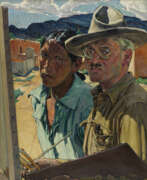

Walter Ufer is an American illustrator and muralist. He received his formal art education in Hamburg and Dresden, where he befriended the American artists Joseph Henry Sharpe and Ernest Blumenschein. In 1906, Ufer moved to Taos, New Mexico, where he became part of a group of painters known as the Taos Society of Artists.
Walter Ufer was drawn to the rugged landscape of the American West and the culture and daily life of the Pueblo Native Americans. Ufer's paintings are characterized by vivid colours and a free-spirited style of painting, conveying the energy and movement of his subjects. He often paints scenes of hunting, horseback riding and other outdoor activities.
Ufer's work was widely acclaimed during his lifetime and he received many awards for his paintings.
